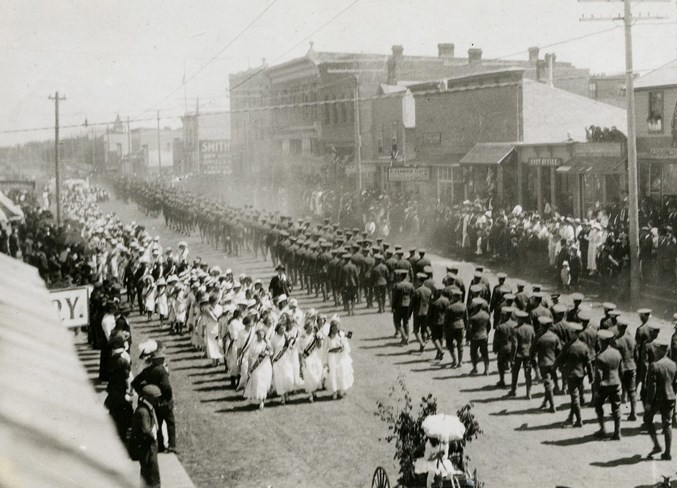The summer of 1918 was a pivotal time in the horrific First World War. In the early spring, the German army had launched an enormous offensive. Initially, the German spring offensive had impressive results.
However, by July, the German advances had faltered and then stopped. While all sides had suffered horrific losses during the brutal four years of the First World War, the German forces were now exhausted. Morale plunged.
Meanwhile, the Canadian Expeditionary Force (C.E.F.) had earned one of the best reputations of any forces along the Western Front. The Canadians had won three notable victories during 1917 – at Vimy Ridge, Hill 70 and Passchendaele. Consequently, the Canadians were considered amongst the very best assault troops with soldiers of exceptional skill and bravery.
On Aug. 8, 1918, the Allied High Command launched a major offensive with the Canadians as one of the key units in the great assault. The successes by the Canadian Corps at the French city of Amiens were truly impressive. A huge hole was punched through the German defences.
German morale was permanently shattered. German General Eric Ludendorff described the commencement of the Battle of Amiens as the “black day of the German Army in the history of the War.”
The great Allied victory turned out to be the first of a string of major successes, collectively known as The 100 Days. The German armies were soon rapidly falling back from their frontal positions in Northern France and Belgium. The Canadians often led the Allied push forwards.
On Sept. 27, 1918, the Battles of Canal du Nord and Cambrai commenced. By the time the City of Cambrai was captured in October, the Canadians had scored one of the most impressive tactical victories of the war. Moreover, the tremendous courage of the Canadians was demonstrated by the fact that during this portion of the great offensive by the Allied forces, Canadians won half of the dozen Victoria Crosses awarded, the highest honours possible for valour.
However, the costs had been enormous. From August to Oct. 11, 1918, more than 40,000 Canadians had either been killed or wounded (20 per cent of the total Canadian losses of the war). Several were from Central Alberta. Among those who lost their lives was Michael Clark, the eldest son of Innisfail’s member of Parliament, Dr. Michael Clark.
The Canadians Corps pushed its way towards Mons. That was where the fighting for the British forces had commenced at the start of the war in August 1914. Now, the job of recapturing that highly symbolic objective was given to the Canadians.
Meanwhile, negotiations for a ceasefire became intense as the German High Command faced the reality that the war was now lost. People everywhere anxiously awaited the long-sought news that the horrific conflict was finally at an end.
At the beginning of November, Germany’s key allies, the Austrian-Hungarian Empire, the Ottoman Empire (Turkey) and Bulgaria, pulled out of the war. On Nov. 7, rumours the war with Germany had come to an end became so widespread that the local employees of the CPR were given a half-day holiday to celebrate. On Nov. 9, Kaiser Wilhelm of Germany abdicated. At 5 a.m. on Nov. 11, agreement on the Armistice was finally reached. It was to take effect at 11 a.m. (a symbolic 11th hour of the 11th day of the 11th month).
In the hours leading up to the ceasefire, the Canadians captured Mons. Hence, to the British High Command, the war had ended in the same place where it had begun.
The people of Innisfail greeted the news of the end of the war with great jubilation. Bells were rung, steam whistles and horns were blown and almost every noise-making device possible was used. Young boys climbed onto the roofs of buildings to wave flags, blow kazoos, pound tinware and lustily sing patriotic songs.
In the afternoon, a parade through the town was organized. More than 100 automobiles, many festooned with flags and pennants, took part. The local pipe band led the procession. A local woman dressed up as Britannia and became a special feature of the parade.
In the evening, a huge bonfire was lit on the hill by the creamery. An old coyote skin was fashioned into an effigy of the Kaiser and burnt in the centre of the great fire.
People fervently prayed that they had just celebrated the end of the “War to End All Wars.”
Michael Dawe is a longtime celebrated Red Deer and Central Alberta historian.



